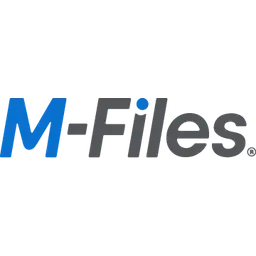Embarking on the quest to find the perfect document management tool for your organization can feel like setting out on a vast sea of options. In this ocean, M-Files and Quip emerge as two guiding stars, each illuminating a path with distinct features and capabilities. M-Files, known for its innovative approach to document management, promises a seamless blend of accessibility and intelligence, turning the often chaotic world of documents into a well-organized trove of information. On the other side, Quip sails with the flag of collaboration, integrating documents, spreadsheets, and communication tools into a single platform designed to boost teamwork and productivity.
M-Files | Quip |
|---|---|
| G2 Score – 4.3 out of 5 stars | G2 Score – 4.2 out of 5 stars |
| TrustRadius Score – 9.2/10 | TrustRadius Score – 7.6/10 |
Collaboration Features: The Ties That Bind a Crew
In the realm of document management, the ability to collaborate effectively is akin to the ropes and knots that bind a ship’s crew together, enabling them to sail smoothly and tackle the waves as one.
M-Files: The Structured Galleon
M-Files approaches collaboration with the precision of a structured galleon, navigating through the sea of documents with metadata-driven organization. It doesn’t just store documents; it intelligently categorizes them, making it easier for team members to find, share, and work on files simultaneously. M-Files enhances collaboration through its version control, ensuring that everyone has access to the latest document versions, while its permissions settings safeguard sensitive information.
The platform integrates with numerous other tools, including CRM and ERP systems, providing a centralized hub from which documents can be accessed and collaborated on across the organization. M-Files’ approach is about creating a cohesive and efficient workflow, where documents are easily managed and securely shared within the team.
Quip: The Agile Schooner
Quip, in contrast, is like an agile schooner, designed for swift and seamless collaboration. It combines documents, spreadsheets, slides, and chat functionality into a single platform, where communication and document work happen side by side. This integration transforms the way teams interact with documents, allowing for real-time collaboration and discussions directly within the context of the work being done.
Quip’s strength lies in its simplicity and focus on enhancing teamwork without the need for switching between different applications. Its collaborative documents serve as a shared space where ideas can be brainstormed, decisions made, and tasks assigned, all within the same interface. Quip is about bringing teams together in a dynamic and interactive environment, fostering collaboration and creativity.
Integration Capabilities: Navigating Diverse Digital Waters
The power of a document management system to seamlessly connect with other tools and platforms is akin to a ship’s compatibility with various navigational technologies, ensuring a smooth and coordinated journey.
M-Files: The Versatile Explorer
M-Files showcases its strength as a versatile explorer, capable of integrating with a wide array of business applications and systems. It doesn’t just store documents; it acts as a central hub, connecting different pieces of the digital workspace puzzle. Whether it’s linking with CRM systems like Salesforce, ERP systems, or productivity tools within the Microsoft Office suite, M-Files ensures that documents and data flow seamlessly across applications.
This extensive integration capability is powered by M-Files’ API, which allows for custom connections to be built, ensuring that regardless of the tools an organization uses, M-Files can adapt and integrate effectively. This versatility makes M-Files an invaluable ally for businesses looking for a document management solution that enhances their existing software investments.
Quip: The Agile Collaborator
Quip sails the digital seas as an agile collaborator, focusing on integration that enhances team communication and collaboration. While it may not offer the broad integration landscape of M-Files, Quip excels in creating a unified workspace by combining documents, spreadsheets, and task management with real-time chat and collaboration. Its integration with Salesforce stands out, making it an ideal choice for businesses that rely heavily on CRM to drive their operations.
Quip’s approach to integration is about simplifying the user experience, ensuring that team members have access to the tools they need within a cohesive environment. This focus on streamlined, collaboration-centric integration makes Quip a compelling option for teams that prioritize ease of use and effective communication.

Related: Check out our free SEO suite

Security and Compliance: The Ship’s Hull and Compass
Just as a ship’s hull protects against the harsh elements of the sea and its compass ensures navigation in compliance with maritime laws, a document management system’s security and compliance features are critical for protecting sensitive information and adhering to regulatory standards.
M-Files: The Fortified Galleon
M-Files stands as a fortified galleon, boasting robust security measures and comprehensive compliance features that safeguard against data breaches and ensure regulatory adherence. With features such as automatic permissions, encryption of data in transit and at rest, and detailed audit trails, M-Files provides a secure repository for an organization’s documents.
Beyond these protective measures, M-Files shines in its ability to help organizations comply with a plethora of regulations, including GDPR, HIPAA, and ISO standards, among others. Its dynamic content management approach allows for the easy implementation of compliance policies, making M-Files a stalwart defender of both security and compliance.
Quip: The Swift Patrol Boat
Quip, akin to a swift patrol boat, offers a streamlined approach to security, focusing on the essentials to provide protection without overwhelming complexity. Quip ensures data security through encryption, secure access with two-factor authentication, and admin controls for user and guest access management.
While it may not offer the same depth of compliance-specific features as M-Files, Quip supports essential compliance needs, enabling organizations to maintain secure and compliant operations. Its integration with Salesforce also benefits from Salesforce’s robust security framework, providing an added layer of protection for documents managed within Quip.
Data Management and Organization: The Charts and Maps of the Digital Sea
The methodologies and features that a document management system employs to organize, categorize, and retrieve documents are like the charts and maps guiding a ship, essential for a successful journey. In the vast expanse of digital documentation, akin to navigating through the open seas, the ability to effectively manage and organize documents determines how swiftly and accurately a crew can access the information they need, ensuring smooth sailing and efficient operations.
M-Files: The Cartographer’s Dream
M-Files excels as a cartographer’s dream, with its innovative approach to data management and organization. Unlike traditional folder-based systems, M-Files utilizes metadata to categorize documents, making the search and retrieval process intuitive and efficient. This means documents are classified based on what they are, rather than where they are stored, allowing for dynamic views of content based on project, department, or any other classification that suits the organization’s needs.
The system’s version control ensures that users are always working with the most current document, while its check-in/check-out feature prevents editing conflicts. M-Files also supports automated workflows, further enhancing document organization by streamlining processes such as approvals, reviews, and archiving. This metadata-driven approach not only improves findability but also supports compliance by automating retention schedules and ensuring proper document handling.
Quip: The Navigator’s Tool
Quip approaches data management and organization as a navigator’s tool, emphasizing simplicity and collaboration. It allows teams to create documents, spreadsheets, and slides within a unified platform, where the focus is on content creation and real-time collaboration. Quip’s organization system is straightforward, with documents easily organized into folders and shared among team members or external collaborators.
The platform offers version history, ensuring that changes can be tracked and previous versions restored if needed. While it may not offer the same depth of metadata-driven organization as M-Files, Quip’s strength lies in its ease of use and the seamless integration of collaboration and document management, making it an effective tool for teams that prioritize fast, collaborative content creation and sharing.
Pricing and Subscription Models: Navigating Costly Waters
Just as every sea voyage requires careful budgeting to ensure resources are well allocated for the journey, choosing between M-Files and Quip also involves understanding their pricing structures to ensure the chosen solution fits within your organization’s budget while meeting its needs.
M-Files: Tailored Expedition
M-Files offers a pricing model that is as tailored as a custom-built ship, designed to fit the specific requirements and size of your organization. With M-Files, the pricing often reflects the degree of customization, the scale of deployment, and the specific features or integrations your team needs.
This can include everything from cloud-based solutions to on-premises installations, with costs varying based on the level of access, storage requirements, and additional services chosen. For organizations looking for a highly customized document management solution that grows and adapts to their evolving needs, M-Files provides the flexibility to build a system that aligns with their financial and operational goals.
Quip: The All-Inclusive Voyage
Quip, on the other hand, takes an all-inclusive approach to its pricing model, much like setting sail on a well-provisioned journey where most necessities are covered under one fee. Quip’s subscription model is straightforward, offering plans that scale based on the size of the team and the range of features required.
This simplicity in pricing makes it easier for organizations to predict costs and plan for expansion without worrying about additional charges for basic features. For teams seeking a collaborative platform that integrates document management with communication tools at a clear, predictable cost, Quip offers an attractive package.
Pricing
M-Files:

Quip:

Conclusion
In our journey to discover the ideal document management tool between M-Files and Quip, we’ve navigated through the crucial aspects of collaboration features, integration capabilities, security and compliance, data management and organization, pricing and subscription models, and customer support and community engagement. Each platform, like a distinct vessel designed for specific voyages, offers unique strengths and capabilities tailored to different organizational needs.
M-Files has proven itself as a sophisticated and versatile solution, ideal for organizations that require a comprehensive and customizable document management system. With its robust security measures, extensive integration options, and advanced data management capabilities, M-Files is particularly suited for businesses with complex workflows, stringent compliance requirements, and a need for a centralized repository of digital assets. Its strong customer support and professional community further ensure that users can maximize the platform’s potential.
Quip, on the other hand, stands out for its simplicity, ease of use, and focus on collaboration. By integrating documents, spreadsheets, and communication tools into a single platform, Quip fosters a dynamic environment where teams can collaborate effectively in real-time. Its straightforward pricing model and emphasis on user-friendly features make it an attractive choice for teams and organizations that prioritize quick setup, seamless collaboration, and straightforward document management without the need for extensive customization.
Read Next:
- AWeber vs EmailOctopus: The Best Email Marketing Tool
- ActiveCampaign vs eSputnik: The Best Email Marketing Tool for 2024
- ActiveCampaign vs MailUp: The Best Email Marketing Tool for 2024
- AWeber vs Campaigner: The Best Email Marketing Tool
- ConvertKit vs MailerLite: The Best Email Marketing Tool for 2024





















